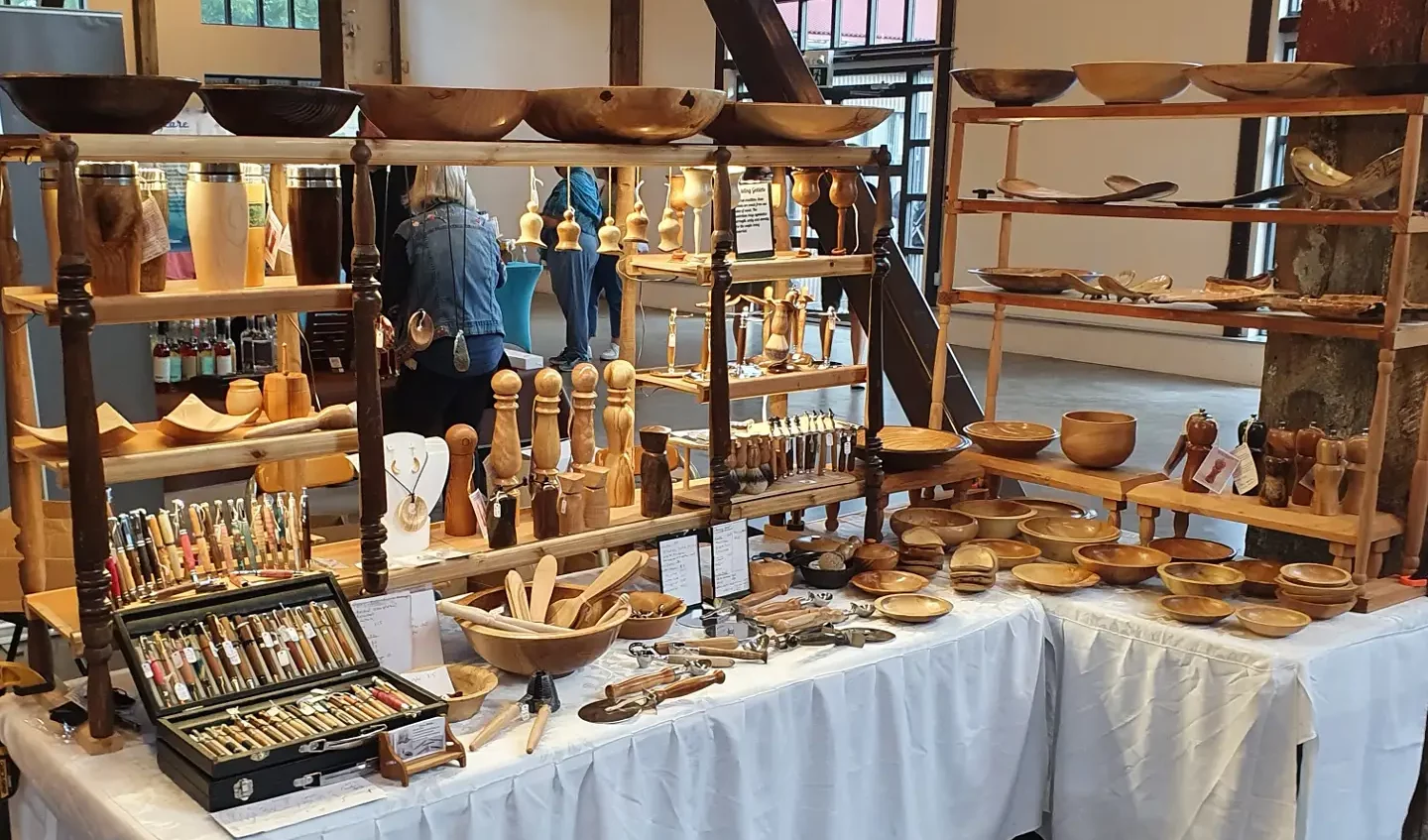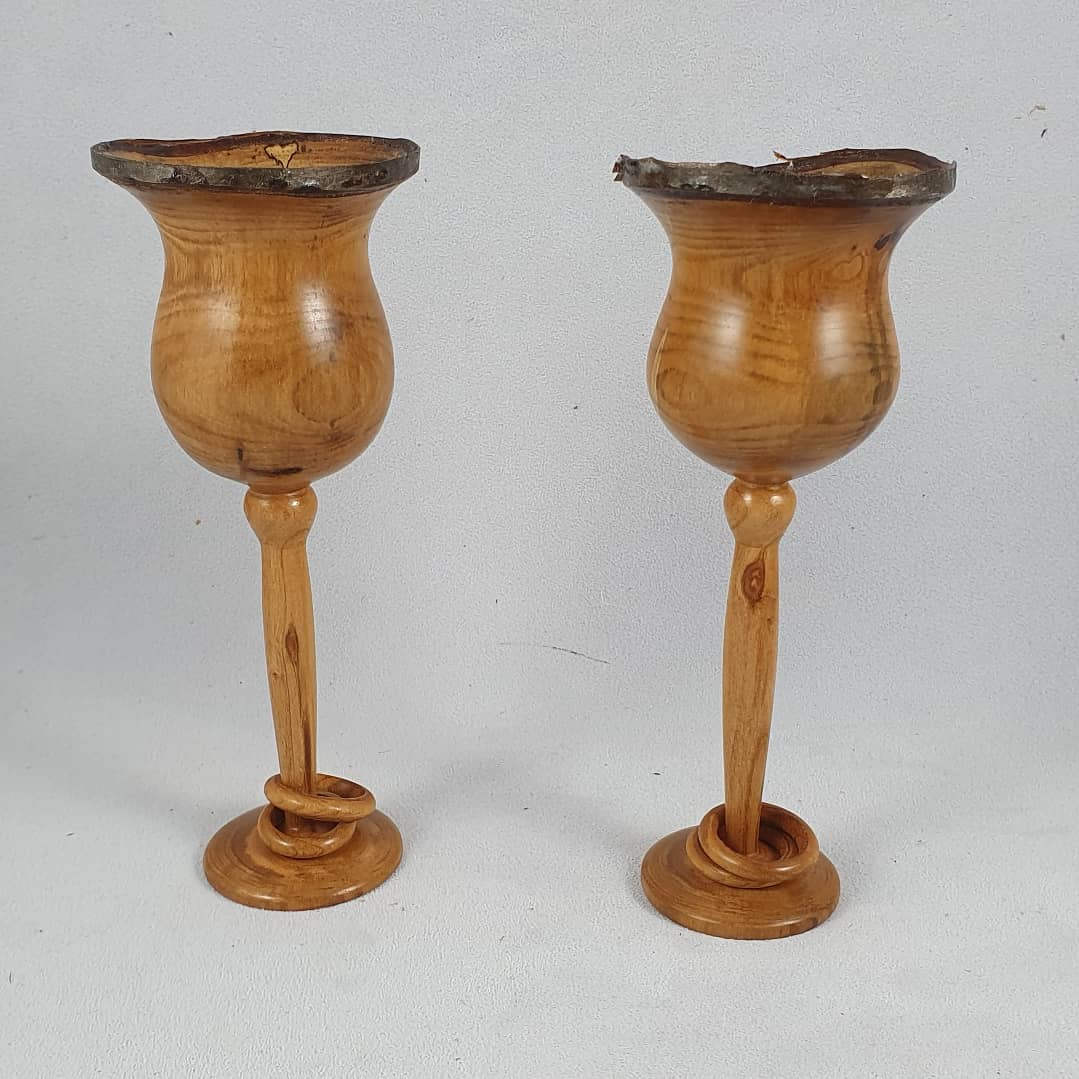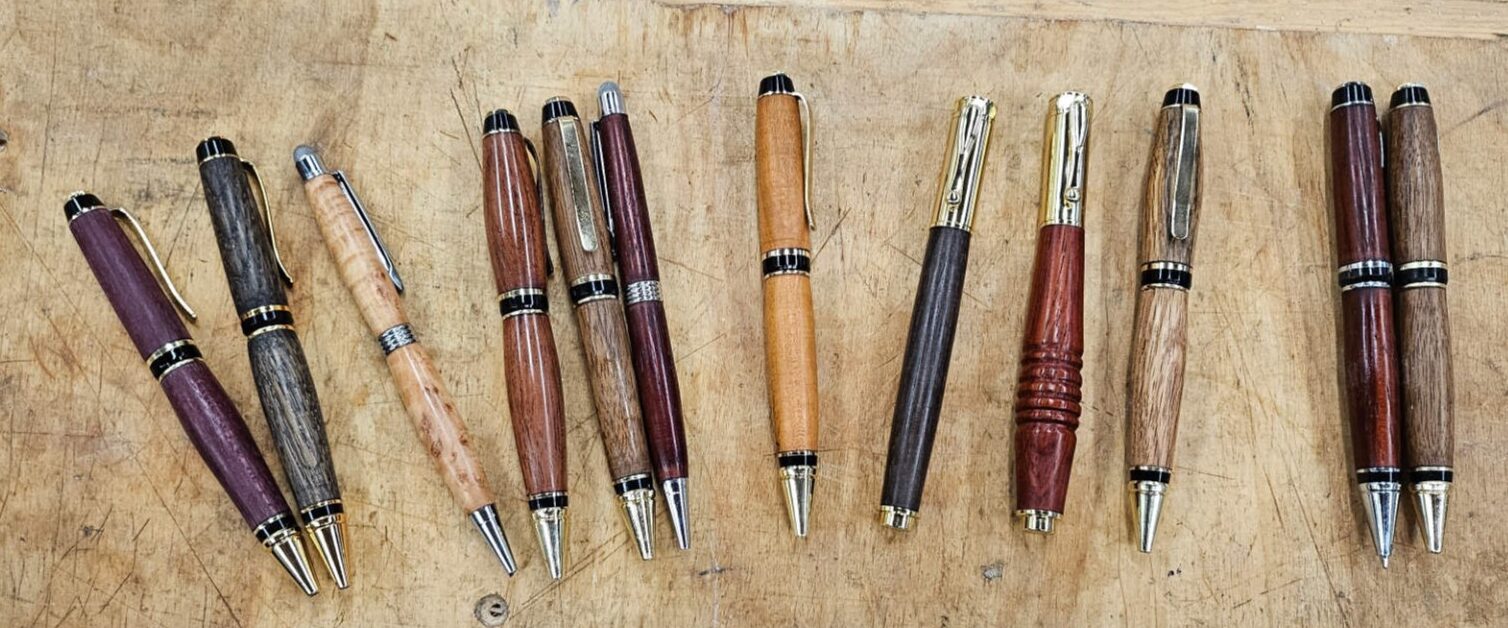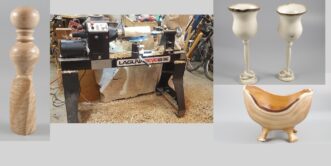In the fall of 2021 I became a woodturning instructor for Urban Woodworker and began teaching classes at the Roundhouse community centre in Vancouver’s Yaletown neighbourhood. Urban woodworker has its flagship location in North Vancouver and also does the programming at the Clayton community centre in Surrey.
Approached to be a Woodturning Instructor
This all came about toward the end of summer in 2021. We were tentatively beginning to do markets again as things opened up after Covid and I was doing one down in the Shipyards district of North Vancouver. 
There is an older fellow who, for years, has regularly come around when I am at a market. He has never bought anything that I recall but he likes to talk about woodworking and is always pleasant to chat with. This time he asked me if I teach woodturning or would be interested in teaching. It turns out that they were looking for a woodturning instructor at the community workshop beside the John Braithwaite community centre in North Vancouver.
While I had not taught before I was interested. I was also a little unsure since I could not see any position posted and was not sure exactly what they were looking. I reached out to Jeremy Tomlinson, the owner of Urban Woodworker, and we arranged to meet to talk about it. As it turned out we got along well and had several acquaintances in common. From there we agreed that I should shadow him through a series of classes. Those sessions went well and soon after that I began teaching the class on my own.
Woodturning class
The class he wanted me to teach is a beginner level class. It runs for four Saturdays in a row for five hours each day. There is a maximum of six students and that is enough it keep me very busy when we have a full class.
On the first day we teach about wood properties and basic workshop skills. The students start with rough lumber and take it through the milling process to produce a finished and squared up piece of wood. Usually starting with a core of poplar they then add in strips of coloured wood until they have enough to make a 10″x10″ blank. They glue up the blank and use it to make a bowl later in the course. In the process they learn to use a sliding compound mitre saw, jointer, thickness planer and table saw.

Learning to teach
I found that teaching woodturning is something I enjoyed right from the beginning. I am a reasonably good woodturner with some decent skills. Teaching forced me to be more conscious how I do things though. During the first few sessions I found that I would sometimes need to do something myself. Pay attention to what I was actually doing and then explain it.
That has largely given way now that I have more experience. I am more aware now of the concepts that students sometimes struggle with and more practised at explaining them. With practice I have learned to watch for the problems that students regularly run into. I find that I am now often aware of how students are doing simply by listening to how their tools are cutting and looking at the results. Something that comes in handy when I am working with one student and cannot keep my eyes on everyone in the room.
I also find myself paying more attention at woodturning demonstrations. Not just what people are demonstrating but also how they present it. I am a member of the Greater Vancouver Woodturners guild and regularly get to watch other woodturners demonstrate. As interesting as it is to learn a new technique I now find myself paying more attention to how it is presented.
Taking it up a level
After I had taught a few classes Jeremy suggested that I start looking for students who would like a level 2 class. In that class the students would need to buy a bowl gouge without a handle. Make a handle for it and learn how to sharpen it. Then make a larger and more difficult bowl with a slightly closed shape. Possibly making a lid to go with the bowl.

In my mind the most valuable skill learned in this class is sharpening. If you know the basic cuts and how to keep your tools sharp then you can be independent. Increased skill and tool control come from practice after that.
The first level two class took almost a year to get organized. It was great fun to see the returning students though. One of the most satisfying parts of this woodturning instructor thing is the returning students and hearing from those who have taken the class as a starting point to continue their own woodturning journeys.
Since that first level two class we have had two more. I think the students enjoyed it. At the end of my second level two class the students were asking for another class to take. Having not considered it I threw the question back at them and asked what they would like to learn. Two projects seem to be popular. A three sided and twisted pepper mill that I make using a multi-axis technique was the first idea. The second was wedding goblets with captive rings. The pepper mill seems like the more usable project so I will likely lean toward that project when we get it organized.


Pen turning
We have just finished our first pen turning class as I write this. I have made many many pens over the years but this was my first time teaching how to do it. This class was envisioned as a beginner level class for people with no previous experience. That being said I only had one new student for this class. The rest were all returning students who just wanted to learn pen turning. We did this as a two week class and each student was able to complete two pens. I was admittedly unsure at the beginning if we really needed two weeks for the class however it seemed to work out well. The students enjoyed the class and I expect that we will do more of them in the future.

